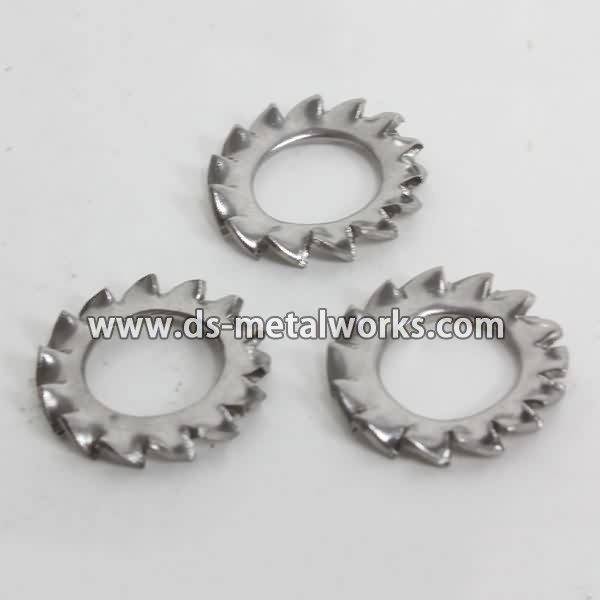Hot-selling attractive ASTM A320 L7 All Threaded Stud Bolts Export to Boston

Short Description:
ASTM A320/A320M L7 All Threaded Stud Bolts Alloy steel bolting for pressure vessels, valves, flanges, and fittings for low-temperature service. Standard: IFI-136, ASME B16.5, DIN976 Inch Size: 1/4”-2.1/2” with various lengths Metric Size: M6-M64 with various lengths Other Available Grade: ASTM A193/A193M B7, B7M, B16 B8 Class 1 & 2, B8M Class 1 & 2, ASTM A320/A320M L7, L7M, L43, B8 Class 1 & 2, B8M Class 1 & 2, and so on. Finish: Plain, Black Oxide, Zinc Plated, Zinc Nickel Pl...
Product Detail
Product Tags
Hot-selling attractive ASTM A320 L7 All Threaded Stud Bolts Export to Boston Detail:
ASTM A320/A320M L7 All Threaded Stud Bolts
Alloy steel bolting for pressure vessels, valves, flanges, and fittings for low-temperature service.
Standard: IFI-136, ASME B16.5, DIN976
Inch Size: 1/4”-2.1/2” with various lengths
Metric Size: M6-M64 with various lengths
Other Available Grade:
ASTM A193/A193M B7, B7M, B16 B8 Class 1 & 2, B8M Class 1 & 2,
ASTM A320/A320M L7, L7M, L43, B8 Class 1 & 2, B8M Class 1 & 2, and so on.
Finish: Plain, Black Oxide, Zinc Plated, Zinc Nickel Plated, Cadmium Plated, PTFE etc.
Packing: Bulk about 25 kgs each carton, 36 cartons each pallet
Advantage: High Quality and Strict Quality Control, Competitive Price,Timely Delivery; Technical Support, Supply Test Reports
Please feel free to contact us for more details.
Product detail pictures:



We regularly perform our spirit of Innovation bringing progress, Highly-quality making certain subsistence, Administration marketing benefit, Credit score attracting customers for Hot-selling attractive ASTM A320 L7 All Threaded Stud Bolts Export to Boston, The product will supply to all over the world, such as: Karachi, New Delhi, Macedonia, With a wide range, good quality, reasonable prices and stylish designs, our products are extensively used in public placesand other industries. Our products are widely recognized and trusted by users and can meet continuously developing economic and social needs. We welcome new and old customers from all walks of life to contact us for future business relationships and achieving mutual success!
Indian Railways (IR) is an Indian state-owned enterprise, owned and operated by the government of India through the Ministry of Railways. It is one of the world’s largest railway networks comprising 115,000 km of track over a route of 65,000 km and 7,500 stations. Indian Railways carries about 7,500 million passengers annually or more than 20 million passengers daily and 2.8 million tons of freight daily. Railways were first introduced to India in 1853 from Bombay to Thane. In 1951 the systems were nationalized as one unit, the Indian Railways, becoming one of the largest networks in the world. IR operates both long distance and suburban rail systems on a multi-gauge network of broad, metre and narrow gauges. It also owns locomotive and coach production facilities at several places in India and are assigned codes identifying their gauge, kind of power and type of operation. Its operations cover twenty four states and three union territories and also provide limited international services to Nepal, Bangladesh and Pakistan.
Indian Railways is the world’s fourth largest commercial or utility employer, by number of employees, with over 1.4 million employees. As for rolling stock, IR holds over 229,381 Freight Wagons, 59,713 Passenger Coaches and 9,213 Locomotives. The trains have a 5 digit numbering system as the Indian Railways runs about 10,000 trains daily. As of 31 March 2012, 22,224 km (13,809 mi) (34%) of the total 65,000 km (40,000 mi) km route length was electrified. Indian Railways is divided into several zones, which are further sub-divided into divisions. The number of zones in Indian Railways increased from six to eight in 1951, nine in 1952 and sixteen in 2003. Each zonal railway is made up of a certain number of divisions, each having a divisional headquarters. There are a total of sixty-eight divisions. Each of the sixteen zones is headed by a General Manager (GM) who reports directly to the Railway Board. The zones are further divided into divisions under the control of Divisional Railway Managers (DRM). The divisional officers of engineering, mechanical, electrical, signal and telecommunication, accounts, personnel, operating, commercial and safety branches report to the respective Divisional Manager and are in charge of operation and maintenance of assets. Further down the hierarchy tree are the Station Masters who control individual stations and the train movement through the track territory under their stations’ administration.
Source – Wikipedia
This footage is part of the professionally-shot broadcast stock footage archive of Wilderness Films India Ltd., the largest collection of imagery from South Asia. The Wilderness Films India collection comprises of thousands of hours of high quality broadcast imagery, mostly shot on HDCAM 1080i High Definition, HDV and XDCAM. Write to us for licensing this footage on a broadcast format, for use in your production! We are happy to be commissioned to film for you or else provide you with broadcast crewing and production solutions across South Asia. We pride ourselves in bringing the best of India and South Asia to the world… Reach us at wfi @ vsnl.com and admin@wildfilmsindia.com.






